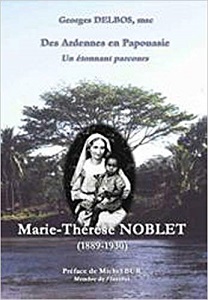HAVE YOU COME ACROSS THE STORY OF MARIE THERESE NOBLET: FRANCE, PNG, AUSTRALIA?
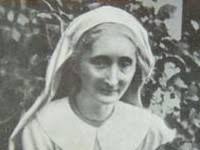
Many of us from the past used to hear the story of Marie Therese Noblet, her connection with Archbishop Alain De Boismenu, devil possession, her mission in PNG. January 15th sees the 90th anniversary of her death.
MARIE THERESE NOBLET, 1889-1930
by James Griffin, This article was published in Australian Dictionary of Biography, Volume 11, (MUP), 1988
FRENCH ORIGINS
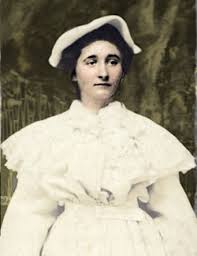
Marie Thérèse Augustine Noblet (1889-1930), Catholic mystic, was born on 30 September 1889 at Signy-l'Abbaye, Ardennes, France, second of three children of Charles Constant Noblet, a wealthy textile manufacturer, and his second wife Marie Angèle, née Panis, whose piety led them to endow a religious orphanage. In 1894, soon after his business failed, Charles died and the straitened family went to Rheims to Marie's father, a professor of medicine. Within eighteen months Marie Thérèse's younger sister, mother and grandmother died, leaving the traumatized child under the care of her awesome grandfather, who placed her as a boarder with the Sisters of the Child Jesus. After his death in 1900 she lived with relatives at Epernay. In 1896 she had received extreme unction for peritonitis which had permanently weakened her. In 1901 she wrote down her first 'decision for Christ'. Her irregular convent schooling ceased in 1903 but she was undoubtedly steeped in devout eschatological and legitimist traditions. In 1905, encased in plaster and unable to walk because of dorso-lumbar 'Pott's disease', she was suddenly cured in the Lourdes grotto, becoming the twelfth cure authenticated by the official Medical Bureau. Other ailments followed, and pilgrimages, one of which resulted in an unverified cure.
THE DEVILS
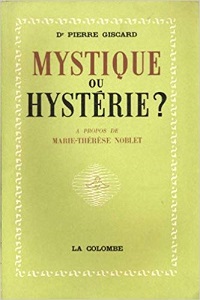
About 1910 Noblet took a temporary vow of virginity in spite of deep affection, which she retained, for a military officer 'of good birth'. The Carmelites rejected her because of physical frailty. From 1911 she felt persecuted by devils with such names as Isokoran (whom she believed to be a Japanese spirit of impurity), Sadoc, Jupiter (the most violent), Venus and Cupidon. Her cousin and a priest testified to finding her hurled from her bed and bound intricately and otherwise inexplicably by cords. In 1913, finally accepting her role as 'victim', destined to share vicariously in Christ's sufferings, Noblet felt herself violently stabbed, spat blood, and found a visible subcutaneous cross impressed over her heart. Satan or 'the old fellow' called her, she claimed, 'the child of Calvary'.
PNG, THE HANDMAIDS OF THE LORD
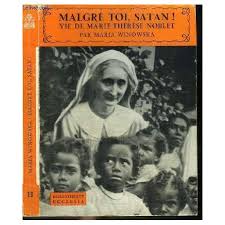
In early 1921 near Marseilles, Archbishop Alain de Boismenu, called in as an exorcist, witnessed her recovery from immobilization and blindness; on Holy Thursday she received a further stigma, a purple host below her throat. Believing her mystical powers might help 'to end Papua's long pagan lethargy', Boismenu risked derision by embarking with her for Papua in September; it was no environment for a semi-invalid. At Florival, Kubuna (Mekeo), she was almost immediately professed, contrary to canonical regulations, as mother superior of the recently founded (1918) Congregation of the Handmaids of our Lord. Living alone with and sleeping on a corn-cob mattress like her indigenous Sisters, she is said to have 'trampled on the barrier of race'. Divine approval was further signified by other transient and idiosyncratic stigmata. As Noblet rejected 'confidence and admiration', such symbols were witnessed only by a presumably sane and veracious Boismenu and a few other intimates during her life. Similarly her continuing Satanic 'possessions', 'paroxysms of disgusting hatred' and intermittent ecstasies were only disclosed to others posthumously. The stigmata are not mentioned in the most recent official history of the Sacred Heart mission (1985) presumably because of post-Vatican II scepticism and because her credibility is relevant to Boismenu's cause for canonisation.
MISSION IN PNG
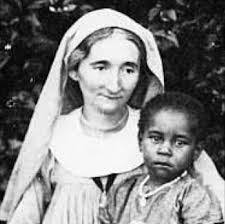
To her charges and colleagues Mother Noblet appeared ineffably serene, always amiable and homely and devoid of any symptom of artful hysteria. In spite of her constricted upbringing, she was enthusiastic about her 'daughters' who climbed palms, played football and swam. Uncomplaining about her insomnia and dolorous infirmities, she travelled fearlessly on horseback in the bush. Her profound spirituality was credited with doubling baptisms to over 16,000 in 1921-30; new convents were founded; in 1927 she was triumphantly acclaimed by the barbaric Fuyughés as their 'mother'.
IN AUSTRALIA
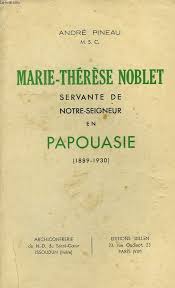
Noblet spent most of 1928 in Sydney meeting canonical obligations, inconspicuously attending the International Eucharistic Congress and living at convents where she believed angels administered communion to her. Her death at Kubuna on 15 January 1930 was, said Boismenu, 'austere, swift and violent … like the death of Him Whose Passion she willed to continue in her body and soul'. She is revered by the Handmaidens who today number over 70 spread over eight dioceses. Photographs reveal a gracile, sorrowful madonna-like figure, hollow-cheeked with sensitive, piquant features. Even in Papua New Guinea her reputation has been obscure, but she influenced the vocation of the first Papua New Guinean Catholic priest and bishop Louis Vangeke and, posthumously, through Boismenu the conversion of the Australian poet and conservative polemicist James McAuley (1917-1976).
